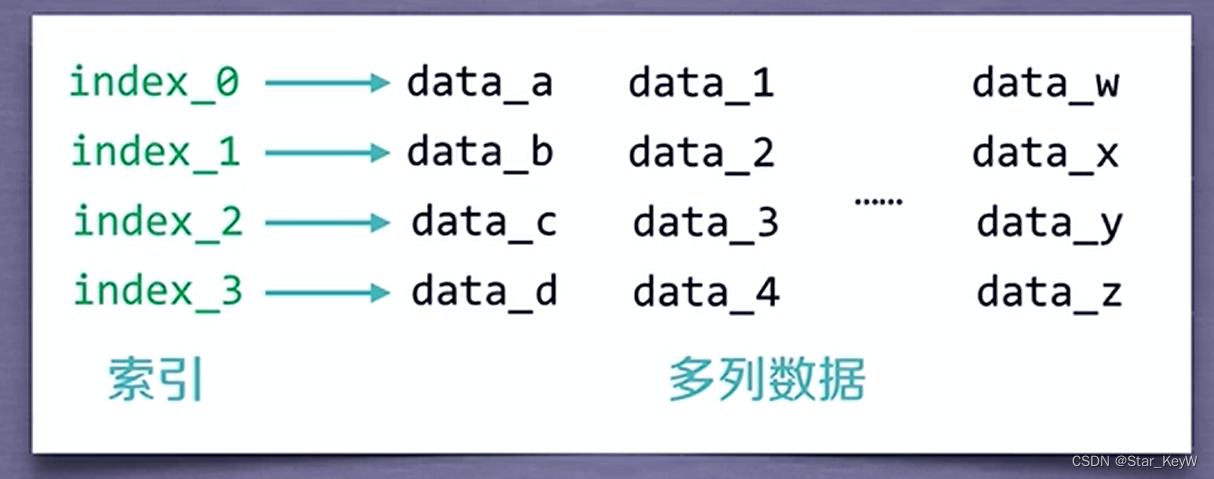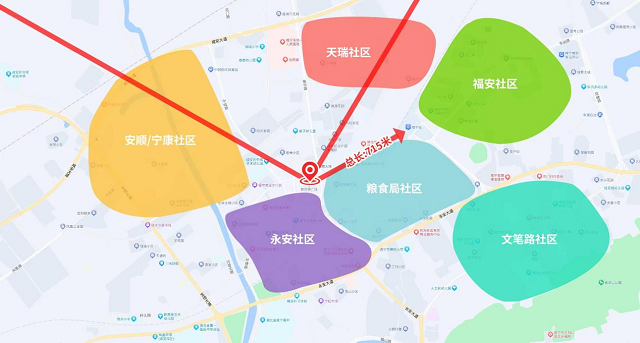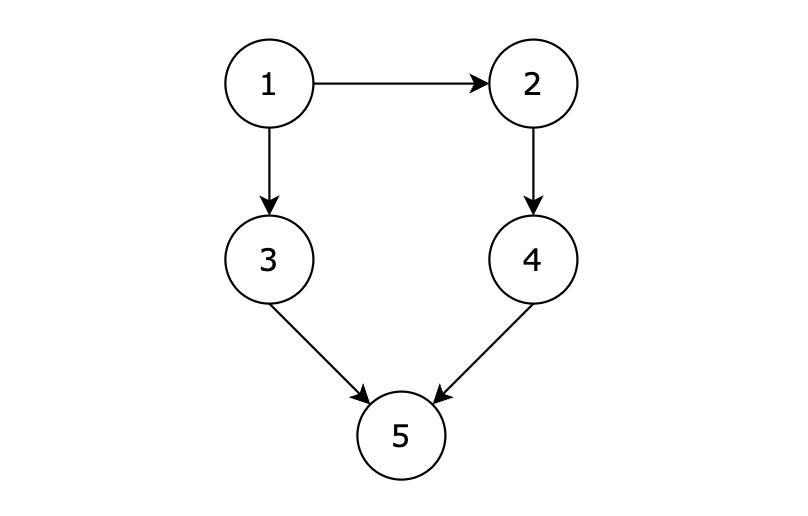目录
5.7 t.loc[["a","b"],["X","Y"]]
6.1 t[(10 < t["W"]) & (t["W"] < 20)]
6.2 t[(6 == t["W"]) | (t["W"] == 9)]
6.6 pd.isnull(t1) & pd.notnull(t1)
6.11 t1["X"].fillna(t1["X"].mean())
7.10 df.groupby('column').mean()
7.11 df.groupby('column').agg({'col1': 'mean', 'col2': 'sum'})
7.12 df.pivot_table(values='col1', index='col2', columns='col3', aggfunc='mean')
9.4 t1.merge(t2, how="outer", on="B")
11.4 t1.set_index("A", drop=False)
11.10 c["one"] & c["one"]["bar"]
11.12 b.swaplevel().loc["bar"]
# 开篇
pandas可以读取SQL;pd.read_sql(sql_sentence,connection;
类型转换: map(int, a):
- map是一个 Python 内置函数;
map()的使用示例,用于将一个可迭代对象a中的每个元素都应用int()函数进行转换;- 在 Python 中,
a可以是任何可迭代对象,包括但不限于:
- 列表(List): 最常见的可迭代对象之一,包含多个元素的有序集合。
- 元组(Tuple): 与列表类似,但元组是不可变的序列。
- 集合(Set): 无序且不重复的元素集合。
- 字符串(String): 字符的有序集合。
- 字典(Dictionary): 包含键值对的集合,map() 可以应用于字典的键或值。
1. pandas的series的了解
pandas的使用:
numpy帮我们处理的是数值型的数据,无法处理除数值型之外的类型,而pandas除了处理数值之外(基于numpy),还能帮我们处理其它类型的数据;
pandas的常用数据类型:
Series一维,带标签数组;
DataFrame二维,Series容器;
1.1 pd.Series 创建
import pandas as pd
import numpy as np
import string
# t = pd.Series(np.arange(10))
t = pd.Series(np.arange(10), index=list(string.ascii_uppercase[:10])) # 创建Series
print(t)
print("*" * 100)
print(type(t))

1.2 pd.series 的索引使用
索引默认0开始;
t = pd.Series([1, 2, 3, 1, 2, 3])
print(type(t))
print(t)

索引默认0开始,但是可以手动指定索引;
t = pd.Series([1, 2, 3, 1, 2, 3], index=list("abcdef"))
print(type(t))
print("*" * 100)
print(t)

1.3 pd.series 之字典/索引
通过字典创建一个Series,其中的索引就是字典的键;
重新给其指定其它索引之后,如果能够对应上,就取其值,如果不能,就为Nan;
temp_dict = {"name": "yiyi", "age": 30, "tel": 1186}
t3 = pd.Series(temp_dict)
print(t3)

1.4 pandas 转换数据类型
temp_dict = {"name": "yiyi", "age": 30, "tel": 1186}
t3 = pd.Series(temp_dict) # 创建Series
print(t3)
print("*" * 100)
t = pd.Series([1, 2, 3, 1, 2, 3], index=list("abcdef"))
print(t.dtype)
print("*" * 100)
t4 = t.astype(float) # 转换数据类型
print(t4)
print("*" * 100)
print(t4.dtype)

1.5 pandas 通过索引或者通过位置来取值
temp_dict = {"name": "yiyi", "age": 30, "tel": 1186}
t3 = pd.Series(temp_dict) # 创建Series
print(t3["name"]) # 根据索引key获取数据
print(t3[0]) # 根据索引下标获取数据

1.6 pandas 指定行取值
temp_dict = {"name": "yiyi", "age": 30, "tel": 1186}
t3 = pd.Series(temp_dict) # 创建Series
print(t3[:2]) # 获取前2个数据

t3[:2] :代表2前面的所有行被取出;
t3[["key1","key2"]] :根据key取值;
t3[[1, 2]] :根据位置取值;
如果不存在该key,那么取出来的就会是NaN的值;
temp_dict = {"name": "yiyi", "age": 30, "tel": 1186}
t3 = pd.Series(temp_dict) # 创建Series
print(t3[:2]) # 获取前2个数据
print("*" * 100)
print(t3[[1, 2]]) # 获取指定索引的数据
print("*" * 100)
print(t3[["age", "tel"]]) # 获取指定索引的数据

1.7 pands之Series 切片和索引
切片:直接传入start end或者步长即可;
索引:一个的时候直接传入序号或者index,多个的时候传入序号或者index的列表;
1. t[2:10:2] :从2开始到10结束,步长为2
t = pd.Series(np.arange(10), index=list(string.ascii_uppercase[:10])) # 创建Series
print(t)
print("*" * 100)
print(t[2:10:2]) # 从2开始到10结束,步长为2

2. t[[2, 3, 6]] :只获取2,3,6的数据
t = pd.Series(np.arange(10), index=list(string.ascii_uppercase[:10])) # 创建Series
print(t)
print("*" * 100)
print(t[[2, 3, 6]]) # 获取指定索引的数据

3. t["F"] :根据key获取数据
t = pd.Series(np.arange(10), index=list(string.ascii_uppercase[:10])) # 创建Series
print(t)
print("*" * 100)
print(t["F"]) # 获取指定索引的数据

1.8 pands之Series 的索引和值
Series对象本质上有两个数组构成,一个数组构成对象的键(index,索引),一个数组构成对象的值(value)
键→值

ndarray的很多方法都可以运用于series类型,比如argmax,clip;series具有where方法,但是结果和ndarray不同;
t = pd.Series(np.arange(10), index=list(string.ascii_uppercase[:10])) # 创建Series
print(t.index) # 获取Series的索引
print(type(t.index)) # 获取Series的索引下标类型
print("*" * 100)
print(t.values) # 获取Series的值
print(type(t.values)) # 获取Series的值类型

各种方法:
list(t.index)[:2] :先获取所有的index,取2前面的所有行
t = pd.Series(np.arange(10), index=list(string.ascii_uppercase[:10])) # 创建Series
print(type(t.index)) # 获取Series的索引下标类型
print(len(t.index)) # 获取Series的索引下标长度
print(list(t.index)) # 获取Series的索引下标
print(list(t.index)[:2]) # 指定获取Series的索引下标

2. pandas读取外部数据/sql/mongodb
2.1 read_csv 读取csv文件
pd.read_csv("../youyube_video_data/GBvideos-pandas.csv") :读取csv文件
- 除了cvs文件外,还可以读取SQL,MongoDB的文件内容:
from pymongo import MongoClient导包;pd.Series(t)读取;
- 不同列索引的情况下,也不会影响这些数据转成DataFrame:
df = pd.DataFrame(data)转换
df = pd.read_csv("../youyube_video_data/GBvideos-pandas.csv") # 读取csv文件
print(df)

3. pandas的dataFrame的创建
3.1 pd.DataFrame 的创建
- DataFrame对象既有行索引,又有列索引:
- 行索引,表明不同行,横向索引,叫index,0轴,axis=0;
- 列索引,表明不同列,纵向索引,叫columns,1轴,axis=1;
t = pd.DataFrame(np.arange(12).reshape((3, 4)))
print(t)

3.2 DataFrame指定行索引,指定列索引
t = pd.DataFrame(np.arange(12).reshape((3, 4)), index=list("abc"), columns=list("WXYZ"))
print(t)

3.3 DataFrame切片操作
d1 = {"name": ["yiYi", "zhangSan"], "age": [24, 28], "tel": [1186, 1185]}
print(pd.DataFrame(d1)) # 创建DataFrame

3.4 字典转成DataFrame
d1 = [{"name": "yiYi", "age": 24, "tel": 1186}, {"name": "zhangSan", "age": 28}, {"name": "wangWu", "age": 30}]
print(d1)
print("*" * 100)
print(pd.DataFrame(d1)) # 将列表转换为DataFrame

4. Dataframe的描述信息
DataFrame的基础属性:
df.shape # 行数 列数df.dtypes # 列数据类型df.ndim # 数据维度df.index # 行索引df.columns # 列索引df.values # 对象值,二维ndarray数组DataFrame整体情况查询:
df.head(3) # 显示头部几行,默认5df.tail(3) # 显示末尾几行,默认5行df.info() # 相关信息概览:行数,列数,列索引,列非空值个数,列类型,内存占用df.describe() # 快速综合统计结果:计数,均值,标准差,最大值,四分位数,最小值
4.1 sort_values 排序
df.sort_values(by="W", ascending=False) :排序,by 指定行索引,ascending=False 降序排序
t = pd.DataFrame(np.arange(12).reshape((3, 4)), index=list("abc"), columns=list("WXYZ"))
t[2:] = 1
print(t)
print("*" * 100)
t1 = t.sort_values(by="W") # 根据W升序排查
print(t1)
print("*" * 100)
t2 = t.sort_values(by="W", ascending=False) # 根据W降序排查
print(t2)

4.2 指定前2名排序
t = pd.DataFrame(np.arange(12).reshape((3, 4)), index=list("abc"), columns=list("WXYZ"))
t[2:] = 1
print(t)
print("*" * 100)
df = t.sort_values(by="W", ascending=False)
print(df.head(2)) # 获取前2个数据

5. dataFrame的索引
注意事项:
方括号写数字,表示取行,对行进行操作;
写字符串,表示的去列索引,对列进行操作;
5.1 t[:5]
t[:5] :取前5行数据
t = pd.DataFrame(np.arange(24).reshape((8, 3)), columns=list("WXY"))
t[2:] = 1
print(t)
print("*" * 100)
# 取前5行数据
print(t[:5])

5.2 t["W"]
t["W"] :指定列获取
t = pd.DataFrame(np.arange(24).reshape((8, 3)), columns=list("WXY"))
t[2:] = 1
print(t)
print("*" * 100)
# 指定列获取
print(t["W"])

5.3 loc & iloc
loc & iloct.loc[0, "Y"]:获取指定行和列的数据t.loc[0]&t.loc[0, :]:取出指定行的数据
pandas 之loc :
df.loc通过标签索引行数据;df.iloc通过位置获取行数据;
t = pd.DataFrame(np.arange(24).reshape((8, 3)), columns=list("WXY"))
t[2:] = 1
print(t)
print("*" * 100)
print(t.loc[0, "Y"]) # 获取指定行和列的数据
print(type(t.loc[0, "Y"])) # 获取指定行和列的数据类型
print("*" * 100)
print(t.loc[0]) # 取出指定行的数据
print(t.loc[0, :]) # 取出指定行的数据

5.4 t.loc[:, "Y"]
t.loc[:, "Y"] :取出指定列的数据
t = pd.DataFrame(np.arange(24).reshape((8, 3)), columns=list("WXY"))
print(t)
print("*" * 100)
print(t.loc[:, "Y"]) # 取出指定列的数据

t.loc[] :取多行多列:
5.5 t.loc[["a","b"]]
t.loc[["a","b"]] :取a,b行
t = pd.DataFrame(np.arange(24).reshape((8, 3)), index=list("abcdefgh"), columns=list("WXY"))
print(t)
print("*" * 100)
print(t.loc[["a", "b"]])

5.6 t.loc[:,["X","Y"]]
t.loc[:,["X","Y"]] :取X,Y两列
t = pd.DataFrame(np.arange(24).reshape((8, 3)), index=list("abcdefgh"), columns=list("WXY"))
print(t)
print("*" * 100)
print(t.loc[:, ["X", "Y"]])

5.7 t.loc[["a","b"],["X","Y"]]
t.loc[["a","b"],["X","Y"]] :取a,b两行,X,Y两列
t = pd.DataFrame(np.arange(24).reshape((8, 3)), index=list("abcdefgh"), columns=list("WXY"))
print(t)
print("*" * 100)
print(t.loc[["a", "b"], ["X", "Y"]])

5.8 t.iloc[1,:]
t.iloc[1,:] :只取第1行,和所有列,默认下标为0开始
print(t1.iloc[2:, 1]):从第3行开始获取,包含第三行;print(t1.iloc[:2, 1]):获取3行前面的行,不包括第3行;

5.9 t.iloc[:,2]
t.iloc[:,2] :取所有行,和第2列

5.10 t.iloc[:,[2,1]]
t.iloc[:,[2,1]] :取所有行,和第2、第1列

5.11 t.iloc[[0,2],[2,1]]
t.iloc[[0,2],[2,1]] :取0行和2行,取2列和1列

5.12 t.iloc[1:,:2]
t.iloc[1:,:2] :取1行后所有的行,2列前全部的列,不包含第2列

5.13 t.iloc[1:,:2] = np.nan
t.iloc[1:,:2] = np.nan :取1行后面的行,和2列前面的全部列将他们等于nan

6. bool索引和缺失数据的处理
6.1 t[(10 < t["W"]) & (t["W"] < 20)]
t[(10 < t["W"]) & (t["W"] < 20)] & 且:获取指定条件数据
t = pd.DataFrame(np.arange(24).reshape((8, 3)), index=list("abcdefgh"), columns=list("WXY"))
print(t)
print("*" * 100)
print(t[(10 < t["W"]) & (t["W"] < 20)]) # 获取指定条件数据

6.2 t[(6 == t["W"]) | (t["W"] == 9)]
t[(6 == t["W"]) | (t["W"] == 9)] | 或:获取指定行和列的数据
t = pd.DataFrame(np.arange(24).reshape((8, 3)), index=list("abcdefgh"), columns=list("WXY"))
print(t)
print("*" * 100)
print(t[(6 == t["W"]) | (t["W"] == 9)]) # 获取指定行和列的数据

6.3 t2["name"].str.split("/")
t2["name"].str.split("/") :切割数据
t1 = [{"name": "yiYi/170/90", "age": 24, "tel": 1186}, {"name": "zhangSan/175/120", "age": 28},
{"name": "wangWu/180/130", "age": 30}]
t2 = pd.DataFrame(t1)
print(t2)
print("*" * 100)
print(t2["name"].str.split("/")) # 获取指定列的数据

6.4 转换数据类型为list列表
t2["name"].str.split("/").tolist() :转换数据类型为list列表
t1 = [{"name": "yiYi/170/90", "age": 24, "tel": 1186}, {"name": "zhangSan/175/120", "age": 28},
{"name": "wangWu/180/130", "age": 30}]
t2 = pd.DataFrame(t1)
print(t2)
print("*" * 100)
print(t2["name"].str.split("/").tolist()) # 转换数据类型为list

6.5 缺失数据的处理
处理NaN的数据;
注意:在计算平均值情况下,nan是不参与计算的,但是0会参与运算;
处理0的数据:t[t==0]=np.nan
6.6 pd.isnull(t1) & pd.notnull(t1)
pd.isnull(t1) & pd.notnull(t1) :判断是否为空和不为空,返回bool类型
t1 = pd.DataFrame(np.arange(12).reshape(3, 4), index=list("abc"), columns=list("WXYZ"))
t1[2:] = np.nan
print(t1)
print("*" * 100)
print(pd.isnull(t1)) # 判断是否为空
print("*" * 100)
print(pd.notnull(t1)) # 判断是否不为空

6.7 t1[pd.notnull(t1["W"])]
t1[pd.notnull(t1["W"])] :找到t1数组中W这一列不为null的值,并返回行

6.8 dropna 删除NaN的行
t1.dropna(axis=0, how="any") & t1.dropna(axis=0, how="all") :删除全部有nan的行、删除全部为nan的行
t1 = pd.DataFrame(np.arange(12).reshape(3, 4), index=list("abc"), columns=list("WXYZ"))
t1["W"] = np.nan
t1[2:] = np.nan
print(t1)
print("*" * 100)
print(t1.dropna(axis=0, how="any")) # 删除NaN的行,默认
print("*" * 100)
print(t1.dropna(axis=0, how="all")) # 当前行全部为NaN时,删除该行

6.9 t1.fillna(0)
t1.fillna(0) :填充NaN数据为0
t1 = pd.DataFrame(np.arange(12).reshape(3, 4), index=list("abc"), columns=list("WXYZ"))
t1["W"] = np.nan
t1[2:] = np.nan
print(t1)
print("*" * 100)
print(t1.fillna(0)) # 填充NaN数据为0

6.10 t1.fillna(t1.mean())
t1.fillna(t1.mean()) :不过,一般都会将均值填入到nan进行计算,统计
t1 = pd.DataFrame(np.arange(12).reshape(3, 4), index=list("abc"), columns=list("WXYZ"))
t1["W"] = np.nan
t1[2:] = np.nan
print(t1)
print("*" * 100)
print(t1.fillna(t1.mean())) # 填充NaN数据为平均值

6.11 t1["X"].fillna(t1["X"].mean())
t1["X"].fillna(t1["X"].mean()) :仅对t1的X进行均值统计
注:当X列进行统计均值时,并不会将nan的值统计进行;
t1 = pd.DataFrame(np.arange(12).reshape(3, 4), index=list("abc"), columns=list("WXYZ"))
t1["W"] = np.nan
t1[2:] = np.nan
print(t1)
print("*" * 100)
print(t1["X"].fillna(t1["X"].mean())) # 仅填充X列的NaN数据
print("*" * 100)
print(t1["X"].mean()) # 获取X列的平均值

7. pandas中的常用统计方法
描述性统计:
7.1 df.describe()
- 提供DataFrame的基本统计信息(计数、均值、标准差、最小值、四分位数和最大值)。
df.describe()
7.2 df.mean()
- 计算每一列的均值。
df.mean()
7.3 df.median()
- 计算每一列的中位数。
df.median()
7.4 df.std()
- 计算每一列的标准差。
df.std()
7.5 df.var()
- 计算每一列的方差。
df.var()
7.6 df.min() 和 df.max()
- 计算每一列的最小值和最大值。
df.min()
df.max()
7.7 df.sum()
- 计算每一列的总和。
df.sum()
7.8 df.count()
- 计算每一列的数量。
df.count()
7.9 df.quantile(q)
- 计算每一列的分位数。
q是分位数的值,可以是 0 到 1 之间的浮点数。
df.quantile(0.25) # 计算第一四分位数
聚合和分组统计:
7.10 df.groupby('column').mean()
- 按某一列进行分组,并计算每组的均值。
- 也可以使用
count()来统计分组后的结果;
df.groupby('column').mean()
7.10.1 分组统计案例
t2 = pd.DataFrame({
"W": [0, 0, 1, 1],
"X": [1, 5, 9, 13],
"Y": [2, 6, 10, 14],
"Z": [3, 7, 11, 15]
})
print(t2)
print("*" * 100)
print(t2.groupby("W").mean())
结果:
W X Y Z
0 0 1 2 3
1 0 5 6 7
2 1 9 10 11
3 1 13 14 15
****************************************************************************************************
X Y Z
W
0 3.0 4.0 5.0
1 11.0 12.0 13.0
这里,W=0 的组有两行,所以 X, Y, Z 列的均值分别是 (1+5)/2 = 3.0, (2+6)/2 = 4.0, (3+7)/2 = 5.0;W=1 的组有两行,所以 X, Y, Z 列的均值分别是 (9+13)/2 = 11.0, (10+14)/2 = 12.0, (11+15)/2 = 13.0。
7.11 df.groupby('column').agg({'col1': 'mean', 'col2': 'sum'})
- 按某一列进行分组,并对指定列应用多个聚合函数。
df.groupby('column').agg({'col1': 'mean', 'col2': 'sum'})
7.12 df.pivot_table(values='col1', index='col2', columns='col3', aggfunc='mean')
- 创建数据透视表。
df.pivot_table(values='col1', index='col2', columns='col3', aggfunc='mean')
其他常用统计方法:
7.13 df.corr()
- 计算列之间的相关系数。
df.corr()
7.14 df.cov()
- 计算列之间的协方差。
df.cov()
7.15 df.value_counts()
- 计算某一列中每个值的出现次数。
df['column'].value_counts()
7.16 df.unique()
- 获取某一列中的唯一值。
df['column'].unique()
7.17 df.nunique()
- 计算每一列中的唯一值数量。
df.nunique()
7.18 df.mode()
- 计算每一列的众数。
df.mode()
# 数据的合并和分组聚合
- 字符串离散化的案例:
- 大纲将字符串转换成数字,再进行统计的思路;
- 主要是思路,将字符串离散化后统计;
- 先把所有的字符串都置为零,然后把重复的值变成1或2或3或4这种数据,或出现过的为1,没出现过的为0,然后统计;
- 代码思路:
- 首先找到大列表,就是df中 的每个分裂的列表,把列表展开,进行list操作,然后去重,
- 再把这个df做成一个数组的形状,有着行列索引,这个行列与电影的行列,分类是一样的,
- 再对行数进行循环,当前出现过数据的地方都是1了,没有出现张的地方都是0,
- 再zeros统计每个列中为0的结果,进行求和;最终得出结果;
8. 离散化及其在 Pandas 中的实现方法
参考:离散化及其在 Pandas 中的实现方法-CSDN博客
9. 数据合并
9.1 t1.join(t2)
t1.join(t2) :横向合并
- 这时候会存在t1的所有行,但是t2没有的行全为NaN;
t1 = pd.DataFrame(np.arange(6).reshape(3, 2), columns=list("AB"))
t2 = pd.DataFrame(np.arange(4).reshape(2, 2), columns=list("CD"))
print(t1)
print("*" * 100)
print(t2)
print(t1.join(t2)) # 横向合并

9.2 merge方法
merge方法:按照指定的列把数据按照一定的方式合并到一起。
- 合并方式:
- 默认的合并方式是
inner,即交集。 merge outer,并集,用NaN补全。merge left,左边为准,用NaN补全。merge right,右边为准,用NaN补全。
- 默认的合并方式是
9.3 t1.merge(t2, on="B")
t1.merge(t2, on="B") : 合并相同的列,并删除重复列
t1 = pd.DataFrame(np.arange(6).reshape(3, 2), columns=list("AB"))
t2 = pd.DataFrame(np.arange(4).reshape(2, 2), columns=list("CB"))
print(t1)
print("*" * 100)
print(t2)
print("*" * 100)
print(t1.merge(t2, on="B")) # 合并相同的列,并删除重复列

9.4 t1.merge(t2, how="outer", on="B")
t1.merge(t2, how="outer", on="B") :取出并合
t1 = pd.DataFrame(np.arange(6).reshape(3, 2), columns=list("AB"))
t2 = pd.DataFrame(np.arange(4).reshape(2, 2), columns=list("CB"))
print(t1)
print("*" * 100)
print(t2)
print("*" * 100)
print(t1.merge(t2, how="outer", on="B")) # 取出并合

9.5 how="left" & how="right"
how="left" & how="right" :左连接以t1为准,右连接以t2为准
t1 = pd.DataFrame(np.arange(6).reshape(3, 2), columns=list("AB"))
t2 = pd.DataFrame(np.arange(4).reshape(2, 2), columns=list("CB"))
print(t1)
print("*" * 100)
print(t2)
print("*" * 100)
print(t1.merge(t2, on="B", how="left"))
print("*" * 100)
print(t1.merge(t2, on="B", how="right"))

10. 数据分组聚合
参考目录7.10;
11. 数据的索引学习
11.1 index & reindex
t1.index.values & t1.index = ["a", "b", "c"] & t1.reindex(["c", "a", "d"])
t1 = pd.DataFrame(np.arange(6).reshape(3, 2), columns=list("AB"))
print(t1)
print("*" * 100)
print(t1.index.values) # 获取索引
print("*" * 100)
t1.index = ["a", "b", "c"] # 修改索引
print(t1)
print("*" * 100)
print(t1.reindex(["c", "a", "d"])) # 索引重排, 没有的索引会自动补NaN

11.2 t1.set_index("A")
t1.set_index("A") :将某一列作为索引
注:设置的索引值是可以重复的;
t1 = pd.DataFrame(np.arange(6).reshape(3, 2), columns=list("AB"))
print(t1)
print("*" * 100)
print(t1.set_index("A")) # 将A列设置为索引

11.3 t1.set_index("A").index
t1.set_index("A").index :返回索引
将A列设置为索引后,并返回索引值;
t1 = pd.DataFrame(np.arange(6).reshape(3, 2), columns=list("AB"))
print(t1)
print("*" * 100)
print(t1.set_index("A")) # 设置索引
print(t1.set_index("A").index) # 索引返回

11.4 t1.set_index("A", drop=False)
t1.set_index("A", drop=False) :将A列设置为索引, drop=False 表示不删除A列
t1 = pd.DataFrame(np.arange(6).reshape(3, 2), columns=list("AB"))
print(t1)
print("*" * 100)
print(t1.set_index("A", drop=False)) # 将A列设置为索引, drop=False表示不删除A列

11.5 t1["A"].unique()
t1["A"].unique() :获取A列的唯一值
t1 = pd.DataFrame(np.arange(6).reshape(3, 2), columns=list("AB"))
print(t1)
print("*" * 100)
print(t1.set_index("A", drop=False)) # 将A列设置为索引, drop=False表示不删除A列
print("*" * 100)
t1[1:] = 1
print(t1)
print("*" * 100)
print(t1["A"].unique()) # 获取A列的唯一值

len(t1.set_index("A").index):获取索引长度list(t1.set_index("A").index):转换索引为list
11.6 a.set_index(["c", "d"]
a.set_index(["c", "d"] :设置两个索引
a = pd.DataFrame({
'a': range(7),
'b': range(7, 0, - 1),
'c': ['one', 'one', 'one', 'two', 'two', 'two', 'two'],
'd': ['foo', 'bar', 'foo', 'bar', 'foo', 'bar', 'foo']
})
print(a)
print("*" * 100)
b = a.set_index(["c", "d"]) # 设置两个索引
print(b)

索引练习:
11.7 b.swaplevel()
b.swaplevel() :c 和 d 交换索引位置
a = pd.DataFrame({
'a': range(7),
'b': range(7, 0, - 1),
'c': ['one', 'one', 'one', 'two', 'two', 'two', 'two'],
'd': ['foo', 'bar', 'foo', 'bar', 'foo', 'bar', 'foo']
})
print(a)
print("*" * 100)
b = a.set_index(["c", "d"]) # 设置两个索引
print(b)
print("*" * 100)
print(b.swaplevel()) # c 和 d 交换索引位置
a b c d
0 0 7 one foo
1 1 6 one bar
2 2 5 one foo
3 3 4 two bar
4 4 3 two foo
5 5 2 two bar
6 6 1 two foo
****************************************************************************************************
a b
c d
one foo 0 7
bar 1 6
foo 2 5
two bar 3 4
foo 4 3
bar 5 2
foo 6 1
****************************************************************************************************
a b
d c
foo one 0 7
bar one 1 6
foo one 2 5
bar two 3 4
foo two 4 3
bar two 5 2
foo two 6 1
type(b) :
![]()
11.8 series.Series :索引类型
series.Series :索引类型
a = pd.DataFrame({
'a': range(7),
'b': range(7, 0, - 1),
'c': ['one', 'one', 'one', 'two', 'two', 'two', 'two'],
'd': ['foo', 'bar', 'foo', 'bar', 'foo', 'bar', 'foo']
})
b = a.set_index(["c", "d"])
c = b["a"]
print(c)
print("*" * 100)
print(type(c))

11.9 frame.DataFrame
frame.DataFrame :索引类型
a = pd.DataFrame({
'a': range(7),
'b': range(7, 0, - 1),
'c': ['one', 'one', 'one', 'two', 'two', 'two', 'two'],
'd': ['foo', 'bar', 'foo', 'bar', 'foo', 'bar', 'foo']
})
b = a.set_index(["c", "d"])
c = b[["a", "b"]]
print(c)
print("*" * 100)
print(type(c))

11.10 c["one"] & c["one"]["bar"]
c["one"] & c["one"]["bar"] 根据复合索引取值
a = pd.DataFrame({
'a': range(7),
'b': range(7, 0, - 1),
'c': ['one', 'one', 'one', 'two', 'two', 'two', 'two'],
'd': ['foo', 'bar', 'foo', 'bar', 'foo', 'bar', 'foo']
})
b = a.set_index(["c", "d"])
c = b["a"]
print(c)
print("*" * 100)
print(c["one"])
print("*" * 100)
print(c["one"]["bar"])
c d
one foo 0
bar 1
foo 2
two bar 3
foo 4
bar 5
foo 6
Name: a, dtype: int64
****************************************************************************************************
d
foo 0
bar 1
foo 2
Name: a, dtype: int64
****************************************************************************************************
1
11.11 b.loc["one"].loc["bar"]
b.loc["one"].loc["bar"] :获取索引为one和bar的数据
a = pd.DataFrame({
'a': range(7),
'b': range(7, 0, - 1),
'c': ['one', 'one', 'one', 'two', 'two', 'two', 'two'],
'd': ['foo', 'bar', 'foo', 'bar', 'foo', 'bar', 'foo']
})
print(a)
print("*" * 100)
b = a.set_index(["c", "d"])
print(b)
print("*" * 100)
print(b.loc["one"].loc["bar"]) # 获取索引为one和bar的数据
a b c d
0 0 7 one foo
1 1 6 one bar
2 2 5 one foo
3 3 4 two bar
4 4 3 two foo
5 5 2 two bar
6 6 1 two foo
****************************************************************************************************
a b
c d
one foo 0 7
bar 1 6
foo 2 5
two bar 3 4
foo 4 3
bar 5 2
foo 6 1
****************************************************************************************************
a 1
b 6
Name: bar, dtype: int64
Process finished with exit code 0
11.12 b.swaplevel().loc["bar"]
b.swaplevel().loc["bar"] :获取索引为bar的数据
a = pd.DataFrame({
'a': range(7),
'b': range(7, 0, - 1),
'c': ['one', 'one', 'one', 'two', 'two', 'two', 'two'],
'd': ['foo', 'bar', 'foo', 'bar', 'foo', 'bar', 'foo']
})
print(a)
print("*" * 100)
b = a.set_index(["c", "d"])
print(b)
print("*" * 100)
print(b.loc["one"].loc["bar"]) # 获取索引为one和bar的数据
print("*" * 100)
print(b.swaplevel().loc["bar"]) # 获取索引为bar的数据
a b c d
0 0 7 one foo
1 1 6 one bar
2 2 5 one foo
3 3 4 two bar
4 4 3 two foo
5 5 2 two bar
6 6 1 two foo
****************************************************************************************************
a b
c d
one foo 0 7
bar 1 6
foo 2 5
two bar 3 4
foo 4 3
bar 5 2
foo 6 1
****************************************************************************************************
a 1
b 6
Name: bar, dtype: int64
****************************************************************************************************
a b
c
one 1 6
two 3 4
two 5 2
Process finished with exit code 0







































